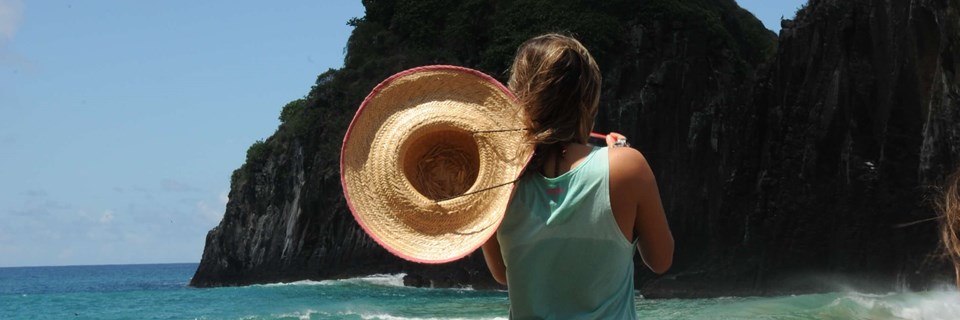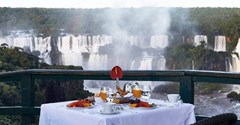Read our guide about the best beaches, cities, activities and natural landmarks to discover the top things to do and see in Brazil.
It is one of the most alluring destinations in the world, whose name evokes images of sun-kissed beaches lined with swaying palms, sweeping rainforest teeming with exotic bird life and colonial era city centres enriched by fascinating Portuguese heritage. But in such a vast country with so much to offer, where are the best places to visit in Brazil? We pick out our favourite cities, beaches and natural wonders to give you a head start in planning your visit to this exotic country.
Brazil Overview
Brazil is the fifth biggest country in the world, blessed with some wonderful (and varied) cities and immense jungles, wetlands and national parks, which bring you closer to the astonishing array of landscapes on offer. The starting point for any visit here is without doubt Rio de Janeiro, not only because direct flights from London touch down here, but because no visit to Brazil would be complete without a few days to explore the Marvellous City and its nearby beaches.
Up the Atlantic coast is Brazil's second most popular city - Salvador, beloved for its Afro-Portuguese heritage and colourful colonial centre. Salvador is the capital of the large Bahia state and can be combined with various beach village resorts and the table-top mountains and huge waterfalls of the extraordinary Chapada Diamantina.
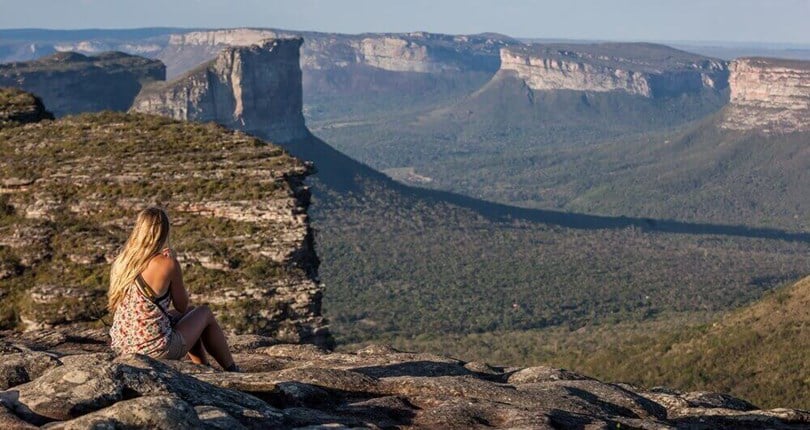
Looking out over the table-top mountains of Chapada Diamantina (photo by Visit Brasil)
Nature lovers will find a myriad of enticing destinations, including the magnificent Iguassu Falls on the border with Argentina, the Pantanal wetlands directly north of the falls and the mysterious Amazon Rainforest, which spreads out over the north-west of the country and into seven neighbouring countries.
Brazil offers a number of lesser-explored areas for those returning to the country after previous visits. The north coast has a number of idyllic beaches, plus the huge white sand dunes and turquoise lagoons of Lençóis Maranhenses. In the heart of the country is the striking modern architecture of the capital Brasilia and the Chapada dos Veadeiros, an alternative to the Chapada Diamantina. To come full circle, in between Brasilia and Rio de Janeiro are the historic cities of Minas Gerais, the centre of Brazil's 18th century gold rush. Let's have a look in more depth at some of the best regions to visit in Brazil.
Discover Rio's icon sights and explore some hidden corners
Christ the Redeemer, Sugarloaf Mountain, the Maracanã Stadium, the beaches of Copacabana and Ipanema... Rio's iconic sights are known the world over, more so than ever after the spotlight shone upon this remarkable city by the 2016 Olympic Games. These places need no introduction, but beyond them lies an historic centre, a thriving arts and cultural scene, local markets and lush botanical gardens, which together offer a completely different perspective on the city. What's more, coastal forest hikes and small islands provide natural havens that offer panoramic viewpoints across Rio that often you won't have to share with many others.
Suggested tour: Our six night Rio City Break gives plenty of time to explore the city, with expert guided tours
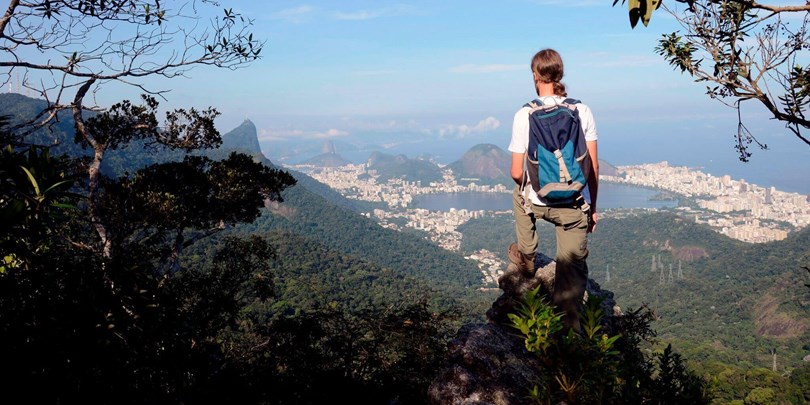
Looking down on Rio from coastal forest (photo by Visit.Rio)
Relax on golden beaches near Rio
Within driving distance of Rio are three very different, yet equally enticing places that can easily be combined with the Marvellous City, without needing to board a flight. Roughly equidistant between Rio de Janeiro and São Paulo is Paraty, whose traffic-free wonderfully-preserved colonial era streets exhibit few influences of 21st century Brazil. Days here are spent strolling the cobbled streets past whitewashed houses, small art galleries and local craft shops and discovering tranquil golden beaches lapped by gentle Atlantic waves. For the more active you can set off on jungle hikes to isolated ruins of Portuguese forts and snorkel off of small islands reached by boats.
Closer to Rio is Ilha Grande, a former pirate hideout. Instead of swashbuckling buccaneers, the island today welcomes Cariocas, Paulistas and foreign visitors seeking a few days peace and quiet away from the big cities. Just like Paraty, you can do as much or as little as you like here, choosing to lounge in the sun, take a dip or snorkel in the inviting crystal-clear water or follow the trails through the island's Atlantic forest.
On the other side of Rio is the hip beach town of Búzios, made famous in the 60's by French icon Brigitte Bardot, who took a liking to what was then a charming fishing village. It offers the same combination of welcoming beaches and verdant forest, but glamorous Búzios is all about classic Brazilian beach culture.
Explore exotic Salvador da Bahia
A trip to the state of Bahia alone can offer the magic combination of a culturally-rich city, nearby idyllic beach escapes and cinematic landscapes in which to pursue outdoor activities. Of course, the focal point of the region is its vibrant capital Salvador, a unique melting pot of African, Portuguese and Brazilian influences. These define the city's distinctive cuisine and are spectacularly embodied in the high-flying capoeira dances and Olodum drumming performances which spring up at a moments notice.
The heart of Salvador is found in the historic Pelourinho district, the upper part of the city in which colourful colonial era houses are clustered around cobbled streets, reached by its 1930's elevator. In the Itapagipe Peninsula we find the Catholic Church of Bonfim, in which plastic body parts are hung from the ceiling by visitors in prayer for a quick recovery, and the lively Mercado São Joaquim, where local produce is piled high. One of the city's most distinctive landmarks is the Barra Lighthouse, the oldest of its kind in the Americas and a great place to watch the sun set across All Saint's Bay (which itself can be explored on a schooner ride).
Head to golden sands or tabletop hills of Bahia
Salvador is within easy reach of a number of laid-back idyllic beach villages, including Praia do Forte and Morro de Sao Paulo, whilst Ilheus and Trancoso are further down the Bahia coast. Around five hours by road inland is the magnificent Chapada Diamantina, a large national park of powerful flat-top mountains, inviting lagoons and underground caves bathed bathed in green and blue light. Of all the waterfalls of the park, the most notable is the 340 metre high Fumaca, Brazil's second highest, so high in fact that the water is blown off course before it has chance to reach the ground.
Suggested tour: Our Diamante Tour explores the best of Bahia, combining Salvador with the Chapada Diamantina and Morro de Sao Paulo.
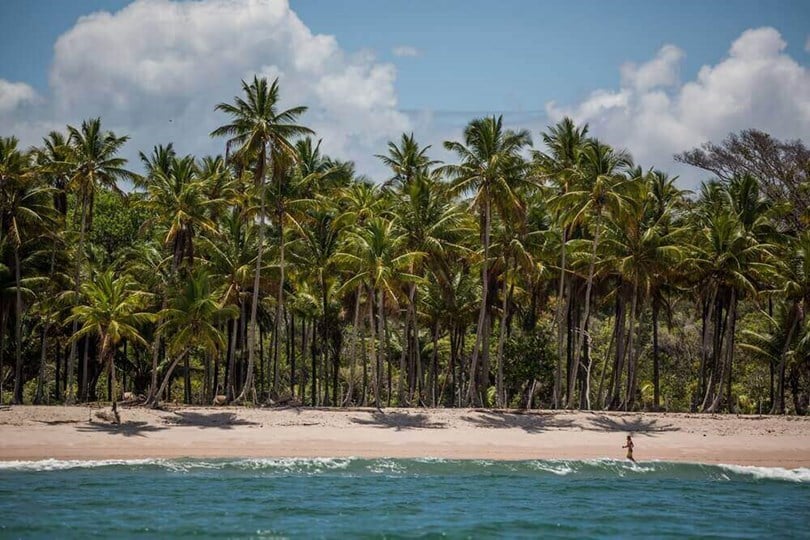
Morro de Sao Paulo (photo by Visit Brasil)
Marvel at Brazil's natural wonders
Brazil's major nature destinations are simply either too large or too dispersed to group into a geographical region, but generally together they occupy much of the western side of the country, each spreading into at least one neighbouring country. These are in addition to the Chapada Diamantina discussed above, the Chapada dos Veadieros near Brasilia and Lençóis Maranhenses in the north (see below), all of which could easily fall into this category.
In the very south of Brazil, straddling the border with Argentina, are the Iguassu Falls. Here 275 separate falls form the largest and, more importantly, most impressive waterfall system in the world, at least in our humble opinion. They can be accessed via Foz do Iguaçu, a short plane ride from Rio and visited either in a two night stay, or three nights if you want to properly explore both sides. Walkways take you right up close to the action, particularly on the Argentine side and also afford breathtaking panoramic views, mainly on the Brazilian side. It is also possible to take an unforgettable helicopter ride of the falls or enjoy a boat ride to experience their full force.
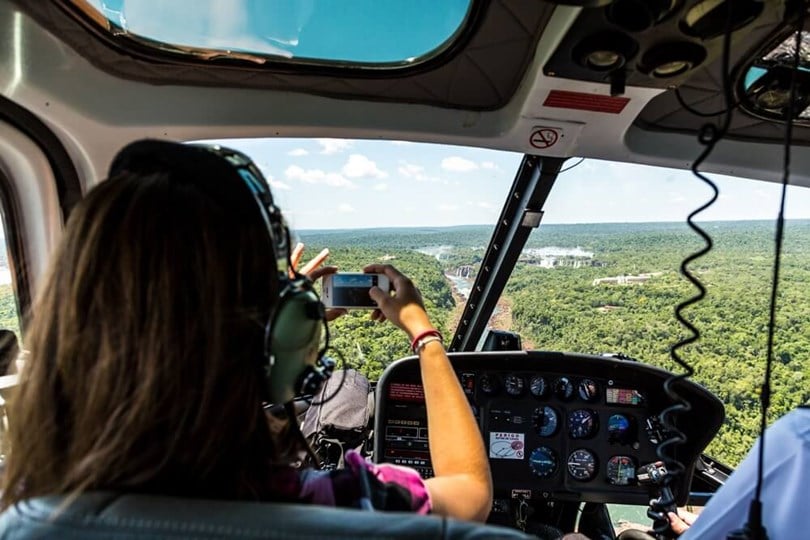
Helicopter ride over the Iguassu Falls (photo by Visit Brasil)
Immerse yourself in a bird-watching paradise
Directly north of the waterfalls is the Pantanal, the best place in Brazil to see wildlife in its natural habitat, most notably the reclusive jaguar. When you consider that the Pantanal, at the most conservative estimate, covers an area bigger than Greece, it is easier to understand the scale and variety of the world's biggest wetlands. The region spreads across borders too, into Bolivia and Paraguay, but the best areas to visit, in terms of both infrastructure and abundance of wildlife, are in Brazil. These areas are accessed via the airports of Cuiabá in the north and Campo Grande, 400 miles further south. Whilst it is possible to fly direct between these two cities, it is best to focus on one area and explore it in greater detail. Visitors stay in comfortable lodges and enjoy daily wildlife excursions with expert naturalists, either by 4x4, jeep, horse-back or in kayaks.
Venture into the mysterious Amazon Rainforest
Out of the nine South American countries into which the Amazon Rainforest reaches, Brazil is probably the one most associated with this mysterious jungle. Whilst the chance to spot colourful birds, caiman and other wildlife is one of the most appealing aspects of a visit here, the Amazon offers a far more all-around experience. Trips encompass visits to isolated communities living jungle lifestyles and guided walks through a complex eco-system which supports remarkable flora and towering trees. Brazil offers several outstanding Amazon Lodges and the excellent Tucano Amazon Cruise.
The large city of Manaus is the gateway to the Brazilian section and is noted for its thriving port, fascinating history and impressive theatre. Nearby is one of the continent's great natural features, the Meeting of the Waters, where the silty light-coloured water of the Rio Solimoes runs side-by-side with the dark waters of the Rio Negro. This is a great place to spot the pink river dolphin.
Suggested tour: Our Caiman Tour is dedicated the nature and wildlife of Brazil, taking in Rio de Janeiro's coastal forest before exploring the Pantanal and the Amazon.
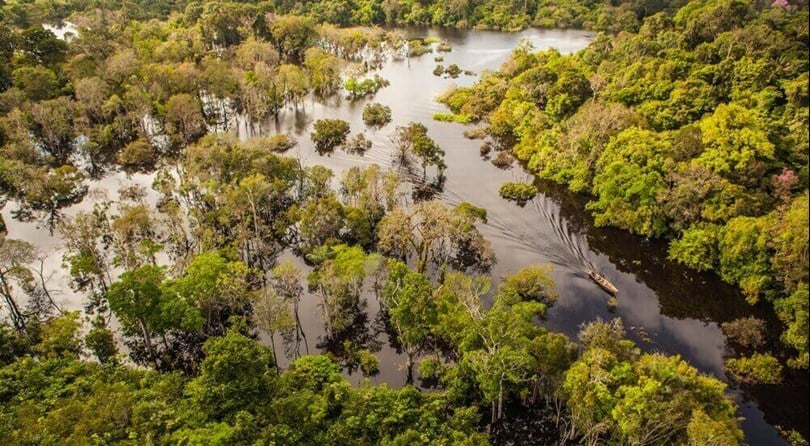
Amazon Rainforest (photo by Visit Brasil)
Visit lesser-explored Central Brazil
As you can see, Brazil has a wealth of star destinations to tempt visitors to its shores. But the country also has a number of fascinating lesser-visited places that show a very different side to this complex and varied nation. For example, the historic cities of Minas Gerais, north of Rio, offer a glimpse into the 18th century Brazilian gold rush, a time of intense prosperity which led to the rich adornment of colonial era centres and huge churches.
Travelling north-west from here brings us to the capital Brasilia, a world away from the cobbled streets of Ouro Preto and the like. The planned capital was to be a model city free of the complexities of contemporaries such as Rio and São Paulo. It was built on neutral ground and was intended to bring life to Brazil's sparsely populated interior. Expert local guides lead visitors on tours around the innovative and daring modern architecture and take you to the heart of local life in one of the most unusual cities on earth.
Around 160 miles north of the capital, on the elevated cerrado which accounts for much of Brazil's interior, is the Chapada dos Veadeiros National Park; a land of other-worldy landscapes formed of dramatic table-top mountains, deep canyons, sandstone cliffs and silvery waterfalls. The park has much in common with Chapada Diamantina in Bahia, providing equal opportunities to hike and swim amid spectacular scenery. One of it's particular highlights is the Vale da Lua (Moon Valley), bizarre lunar rock formations near Alto Paraíso.
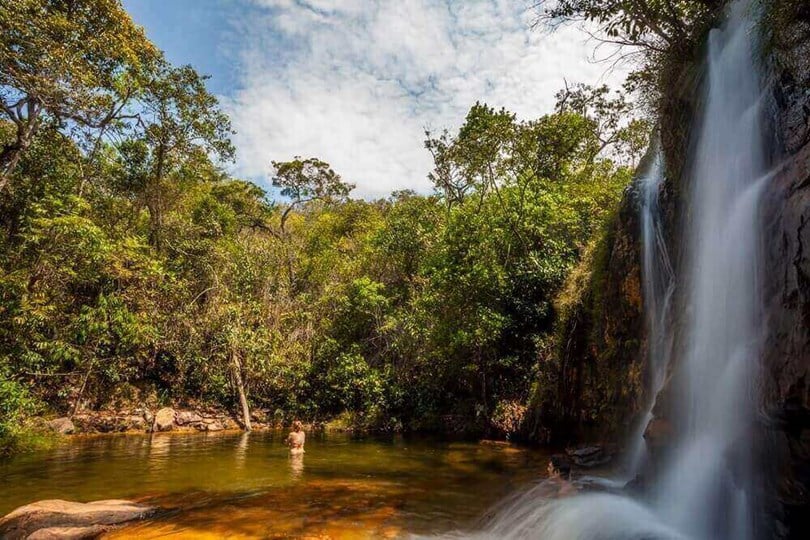
Chapada dos Veadeiros (photo by Visit Brasil)
Discover Brazil's northern coast
Travelling northwards up the coast from Bahia, we come first to the major city of Recife, either side of which are two places that make a visit here worthwhile. Slightly south of the city is the laid-back beach town of Porto de Galinhas, with its large horse-shoe shaped beach and excellent snorkeling opportunities in its colourful reef. To the north, overlooking the skyscrapers of Recife, is Olinda, a hilltop colonial town of charming houses and sumptuous baroque churches and with an artistic and creative vibe. It is also home to one of the country's most interesting carnival celebrations, involving giant puppets and colourful troupes.
The next major city up is Natal, near which we find some of Brazil's best beaches and wonderful resorts and lodges in which to unwind in style. Praia da Pipa is noted for its distinctive red cliffs, lush forest and sandy coves, whilst Fernando de Noronha is a marine reserve and archipelago 240 miles off of the coast. Its Baía do Sancho beach has twice been voted the best in the world.
Continuing on to Brazil's north coast we come to the laid-back fishing village of Jericoacoara, a centre for windsurfing and kite-surfing and whose inviting hammocks, strung lazily over gentle turquoise waters, are impossible to resist. The beach is surrounded inland by large sand dunes, which happens to be the prominent feature of the magical Lençóis Maranhenses National Park, some 260 miles west.
This extraordinary coastal park is in a constant state of change, as the wind sculpts its towering white sand dunes into new daily forms. Following the rainy season, turquoise and green lagoons form and connect with each other, providing a temporary home for different types of fish, whilst others invite you in for a cooling dip. The base for the national park is the historic and now fully-restored city of São Luis, an attractive city of mixed French and Portuguese heritage, adorned with beautiful architecture and laid-back beaches.
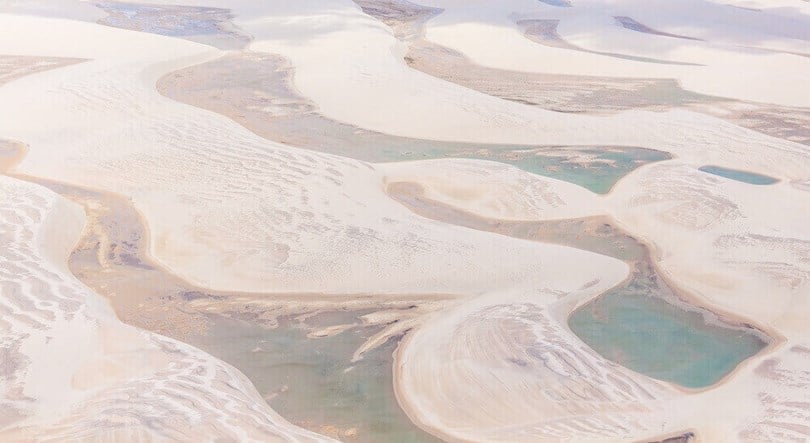
Lençóis Maranhenses (photo by Visit Brasil)
Where to Combine with Brazil
Brazil can easily be combined with other South American countries by flying into Rio de Janeiro or one of the other major cities. In terms of natural crossing points along its borders, by far the most popular place to do this is Iguassu Falls, shared with Argentina, continuing onwards with a flight to Buenos Aires. It is possible to cross from the Brazilian Amazon into the Peruvian jungle via the small town of Tabatinga, at the point where these two countries meet with Colombia. We have several Landmark Tours that combine Brazil with countries such as Peru, Ecuador, Bolivia, Chile and Argentina, as well as a Group Tour to Brazil and Argentina.
Best time to visit Brazil
Brazil's most popular destinations generally remain comfortably warm all year round. Of course February is carnival month if you are specifically looking to join in the celebrations in Rio, Salvador or Olinda. Otherwise when you visit may be determined by how hot you like your weather and perhaps by what you want to see in the Pantanal.
Rio enjoys good temperatures and sun all year round, but the summer months (December to March) are the hottest, wettest, busiest and most expensive. February is carnival time, which brings in even greater numbers of visitors. The winter (July to September) is the coolest and driest and therefore quietest and cheapest time. Perhaps the best time to visit is during Spring (October to November) or Autumn (April to June) when rainfall is low and temperatures high (around 30 degrees), but less humid.
Temperatures also remain consistently high around the Iguazu Falls, and whilst the summer months bring higher water levels and so more water crashing over the waterfalls, the shoulder months offer more comfortable weather, better access to the jungle trails and an impressive abundance of water.
The Pantanal undergoes a yearly cycle of change, with mammals best observed during the driest seasons between May and September, when water levels are lower. The wet season transforms the Pantanal, forming lakes and lagoons and providing good conditions for bird-watching and seeing the varied flora of the region, including the giant water lilies, in bloom.
How to Get to Brazil
British Airways flies direct from London Heathrow to Rio de Janeiro and São Paulo and both journeys take around 11 hours 30 minutes. LATAM also flies direct to São Paulo and Salvador de Bahia can be reached on daytime flights via Lisbon with Air Portugal or via Madrid with Air Europa. An alternative route is to fly direct with British Airways to Buenos Aires in Argentina, Santiago in Chile or Lima in Peru and combine multiple countries, before flying home from Rio de Janeiro, or vice-versa.
Better with experts
Travelling in any Latin American country can sometimes be a challenging and unpredictable undertaking for even the most well-versed globetrotters. With our vast experience and expertise, Veloso Tours will carefully create the perfect itinerary for you, handling all the tricky logistics, negotiating the best prices, liaising with local suppliers and ensuring everything flows perfectly during your time here. All you have to do is decide where to go! Our collection of local guides will help bring these wonderful places to life, giving you their inside knowledge and offering an authentic and personal perspective, that will leave you both informed and inspired.
The Veloso Tours website has all the ideas and inspiration you'll need to get you started on your Brazilian adventure. Now that you know where to visit in Brazil, our expert consultants would be delighted to work with you to sort out all the little details and craft an unforgettable journey, full of memories that last a lifetime. Get in touch today and start planning your dream trip to Brazil with Veloso Tours.
Choose your perfect holiday
Find inspiration from our selection of itinerary suggestions, a great starting point for your next trip
View More Tours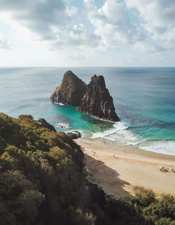
Stay in touch
Infuse your travels, with inspiration from our monthly newsletter.
READY - 20 April 2024
LANDMARK TOURS: Multi-Country & Cross Continent. New Cosmopolitan Tour: Buenos Aires, Iguazu, Rio
CHINA & INDIA: Local Life, People & Unique Cultures
GUIDES by Veloso Tours, are the best Local Hosts
PRIVATE VILLAS: Quality Time in exclusive settings
TRAVEL INSURANCE with extensive COVID-19 cover
